History
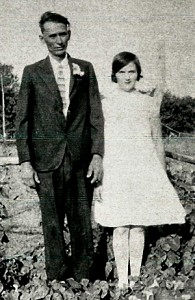 As a young man growing up in the West, my grandfather, George Byer learned a lot from his father, Cornealius Byer…especially when it came to getting along with the Indians in the area. Cornealius was very respected among the Indians, because he was honest with them, and spoke with integrity. He also taught his children to do the same. Because of that teaching, my grandfather was also much respected among the Indian tribes. This was probably a good thing for my grandmother, who was sixteen years younger than Grandpa, and beautiful too.
As a young man growing up in the West, my grandfather, George Byer learned a lot from his father, Cornealius Byer…especially when it came to getting along with the Indians in the area. Cornealius was very respected among the Indians, because he was honest with them, and spoke with integrity. He also taught his children to do the same. Because of that teaching, my grandfather was also much respected among the Indian tribes. This was probably a good thing for my grandmother, who was sixteen years younger than Grandpa, and beautiful too.
Grandma and Grandpa Byer were living on the Rosebud Sicangu Lakota Reservation, after they married. One day probably just a short time after their marriage, Grandma Hattie Byer noticed that a Lakota Sioux Indian chief was watching her…a lot. She mentioned this fact to Grandpa, who told her that Chief Thin Elk thought she was beautiful and had very nice legs. Now, as compliments go, this one was very nice, but I doubt if it did very much in the way of easing Grandma’s jitters about the whole situation. In fact, it most likely increased her anxiety substantially.
Grandma was eighteen years old when she and Grandpa married. Grandpa was thirty four. Having lived around the Indians all his life, he understood their ways, and he knew that there were good Indians and bad Indians, just as there are good and bad men in all walks of life. And Grandpa knew Chief Thin Elk. While Chief Thin Elk did appreciate a beautiful woman…with great legs, he would never have tried anything with Grandpa’s wife, because he respected Grandpa very much. I don’t know how he would have been with the wife of someone he didn’t respect, or any other woman for that matter, but with Grandma, he was respectful, even if he did like to watch her because she was beautiful.
I know that my Grandfather loved my Grandmother very much, and would never have let anyone hurt her, but I still have to wonder…if a small part of him thought the whole think was almost comical, or maybe even thought 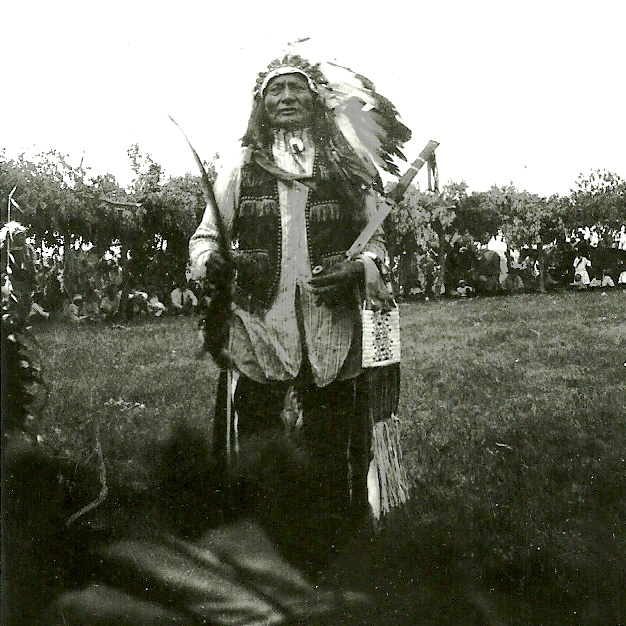 that it was kind of nice to know that men thought his wife was beautiful. I don’t believe that my grandfather ever needed a trophy wife, but I think is is good for a guys ego to know that he has a beautiful wife, and to know that everyone thinks so.
that it was kind of nice to know that men thought his wife was beautiful. I don’t believe that my grandfather ever needed a trophy wife, but I think is is good for a guys ego to know that he has a beautiful wife, and to know that everyone thinks so.
For Grandma, however…well, she only had eyes for Grandpa, and I’m sure she thought it was a little bit forward of Chief Thin Elk to be saying such things. I have never heard of any trouble that ever came out of this situation, so I’m sure that while Chief Thin Elk thought Grandma was beautiful, and had nice legs, he always acted with the utmost respect around her, because she was the wife of his respected friend, and he would do nothing to jepordize that friendship, or shame his people in such an awful way.
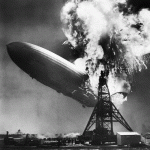 Through the years, or at least since the dawning of flight, man has tried to build flying machines that are more and more creative. Some of these have had amazing runs, like the B-17 Bomber, which was a World War II era plane, that still flies today. Others, like the Hindenburg, went down in a ball of flames. I don’t think it’s usually easy to predict which ones will succeed and which ones won’t. I seriously doubt that people would have predicted that the Concord would ever have the problems it had, or that the Goodyear Blimp would prove successful, where the Hindenburg failed. Sometimes, it’s all about finding yourself with just the right set of components, or making just one slight mistake…and sometimes, the mistake is more obvious.
Through the years, or at least since the dawning of flight, man has tried to build flying machines that are more and more creative. Some of these have had amazing runs, like the B-17 Bomber, which was a World War II era plane, that still flies today. Others, like the Hindenburg, went down in a ball of flames. I don’t think it’s usually easy to predict which ones will succeed and which ones won’t. I seriously doubt that people would have predicted that the Concord would ever have the problems it had, or that the Goodyear Blimp would prove successful, where the Hindenburg failed. Sometimes, it’s all about finding yourself with just the right set of components, or making just one slight mistake…and sometimes, the mistake is more obvious.
The Hindenburg disaster, which occurred on this day, May 6, 1937, was probably the worst slight mistake in history. The Hindenburg was Germany’s version of the most luxurious way to fly in existence at that time. It was over 800 feet long and with its state of the art Mercedes Benz engine, it flew at 85 miles per hour, and had a range of 8,000 miles. The Hindenburg carried 97 passengers, and made ten successful ocean crossings the year before the disaster. It was Germany’s Nazi government’s symbol of national pride, but it held a secret mistake that, on May 6, 1937, exploded into one of Germany’s biggest failures.
The Hindenburg was filled with seven million cubic feet of Hydrogen. The Germans used Hydrogen because of its maneuverability, even though Helium would have been much safer. The Hindenburg was supposed to arrive in New Jersey at 5:00am on that fateful day, but bad weather delayed its arrival until the later afternoon. Even then, the weather was not ideal. Rain further delayed the docking at Lakehurst. When they were finally cleared to dock, Captain Max Pruss brought the ship in too fast and had to order a reverse engine thrust. At 7:20pm a gas leak was noticed. Within minutes, the tail blew up, sending flames hundreds of feet in the air and as far down as the ground below.
The chain reaction that followed caused the entire vessel to burst into flames. There were nearly 1,000 spectators awaiting the arival, who could feel the heat of the fire from a mile away. Those on the Hindenburg 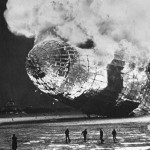 tried to jump. Some tried to jump to the docking cables, and when they fell, they were killed or critically injured. Others tried to jump as they got closer to the ground. Many were critically burned. In all 36 people lost their lives, while 56 managed to survive. Probably the main reason this crash has stayed in the minds of people over the years is that there were so many cameras to document the event. The photographs have become well known. Announcer Herbert Morrison, on WLS radio gave an unforgettably harrowing live account of the disaster, “Oh, oh, oh. It’s burst into flames. Get out of the way, please . . . this is terrible . . . it’s burning, bursting into flames, and is falling . . . Oh! This is one of the worst . . . it’s a terrific sight . . .oh, the humanity.” This truly was a disaster of monumental proportion, and it will never be forgotten.
tried to jump. Some tried to jump to the docking cables, and when they fell, they were killed or critically injured. Others tried to jump as they got closer to the ground. Many were critically burned. In all 36 people lost their lives, while 56 managed to survive. Probably the main reason this crash has stayed in the minds of people over the years is that there were so many cameras to document the event. The photographs have become well known. Announcer Herbert Morrison, on WLS radio gave an unforgettably harrowing live account of the disaster, “Oh, oh, oh. It’s burst into flames. Get out of the way, please . . . this is terrible . . . it’s burning, bursting into flames, and is falling . . . Oh! This is one of the worst . . . it’s a terrific sight . . .oh, the humanity.” This truly was a disaster of monumental proportion, and it will never be forgotten.
 Something very new has happened to the royal family of England. As you all know by now, Prince William and his wife Catherine “Kate” now have a second baby…a girl named Charlotte Elizabeth Diana. In times prior, this child would have been passed over for succession to the throne, but this is a new time, and she is currently fourth in line to the throne. It used to be that if William and Kate were to have a third child, and it was a boy, he would pass up his sister in the line to the throne. That kind of left the girls as a showpiece really, so I think it is a great move to abolish that old tradition. And when we look at the years that Queen Elizabeth has ruled in the United Kingdom, I would have to say that she has done a pretty good job.
Something very new has happened to the royal family of England. As you all know by now, Prince William and his wife Catherine “Kate” now have a second baby…a girl named Charlotte Elizabeth Diana. In times prior, this child would have been passed over for succession to the throne, but this is a new time, and she is currently fourth in line to the throne. It used to be that if William and Kate were to have a third child, and it was a boy, he would pass up his sister in the line to the throne. That kind of left the girls as a showpiece really, so I think it is a great move to abolish that old tradition. And when we look at the years that Queen Elizabeth has ruled in the United Kingdom, I would have to say that she has done a pretty good job.
I am so excited that William and Kate had a baby girl this time, because they have been able to add a tribute to William’s mother, my 18th cousin, Princess Diana. I wish they had named this baby Diana for her first name, but I can certainly understand the reasons not to. As one person commented, this baby should have her own identity. Nevertheless, I think it is important that she have a tie to the grandmother she will never get to know…at least not in this life. I also think it would be wonderful if this baby bore a slight resemblance to Diana, who was quite beautiful.
Princess Charlotte Elizabeth Diana Windsor was born on May 2, 2015 at 8:34am, weighing 8 pounds 3 ounces, which was just 3 ounces less than her brother, Prince George when he arrived on July 22, 2013. Her name has several possibilities as to where it came from. Of course, the previous Princess Charlotte of Wales, was beloved by the people, but she died in childbirth in 1817 at the age of 21. Charlotte is the feminine form of Charles, and I suppose she could be named after Prince Charles. The name means petite. Charlotte is also Kate’s sister, Pippa’s middle name, so it is quite possible the name came from there, as the girls are very close. Of course, I’m sure that Elizabeth is after both Queen Elizabeth, and Kate herself, as her name is Catherine Elizabeth, and as we all know, Diana is after her grandmother, Princess Diana.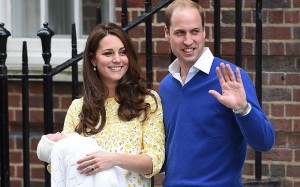
I’m sure this baby will feel a responsibility to be as loving as her grandmother was, and I think that is a good thing. Diana was the “People’s Princess” and I’m sure her granddaughter will be just as beloved as Diana was. While it will be a while before we see many more pictures, I look forward to watching this, my 18th cousin twice removed, grow into the beautiful princess that I’m sure she will become. Her parents have done a wonderful job raising her brother, Prince George, and I know they will do the same with her. I look forward to having the princess dazzle us in the very near future. Congratulations Will and Kate on your beautiful baby girl!!
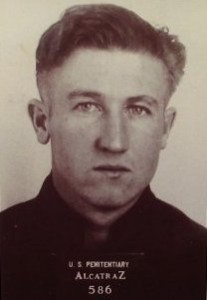 When my husband, Bob Schulenberg and I went to San Francisco for the first time, we wanted to make sure we saw all the sights of the area. I was especially interested in Alcatraz Prison, partly because of it’s unique location, but also because of its history. While visiting the prison, we had the opportunity to visit with an author, who had actually been an inmate at the prison. Jim Quillen recounted the years he spent at the prison, the corruption, abuse, and the Battle of Alcatraz, which took place from May 2, 1946 to May 4, 1946. The battle began with an unsuccessful escape attempt, and ended with the deaths of two guard, William A. Miller and Harold Stites, as well as three of the inmates. Eleven guards and one inmate were injured, and two convicts were later executed for their actions.
When my husband, Bob Schulenberg and I went to San Francisco for the first time, we wanted to make sure we saw all the sights of the area. I was especially interested in Alcatraz Prison, partly because of it’s unique location, but also because of its history. While visiting the prison, we had the opportunity to visit with an author, who had actually been an inmate at the prison. Jim Quillen recounted the years he spent at the prison, the corruption, abuse, and the Battle of Alcatraz, which took place from May 2, 1946 to May 4, 1946. The battle began with an unsuccessful escape attempt, and ended with the deaths of two guard, William A. Miller and Harold Stites, as well as three of the inmates. Eleven guards and one inmate were injured, and two convicts were later executed for their actions.
While most of the inmates and guards were in outside workshops, inmate Bernard Coy, a bank robber serving a 25 year sentence at Alcatraz, was in the main cellhouse sweeping the floor around C Block. Kitchen orderly Marvin Hubbard called on guard William Miller to let him in. He had just finished cleaning the kitchen. As Miller was frisking Hubbard for any stolen articles, Coy attacked him from behind and the two men overpowered the officer. They then released Joseph Cretzer and Clarence Carnes from their cells. They went to the gun gallery and obtained a rifle. As they attempted to make it down to the dock, hoping to catch the incoming boat, they quickly realized that was not going to work. Then, they decided to go back to prison and take some hostages.
At 10:00pm, unarmed guards went into the cellhouse. They were covered by armed guards in the two gun galleries overhead. They found the hostages, but one guard was wounded by a gunshot fired from the roof of one of the cell blocks. Then they locked the open door to D Block, and when the last officer reached safety, the 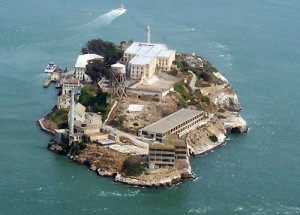 guards opened fire with a massive barrage from machine guns, mortars, and grenades on the prisoners within D Block. The prison authorities thought one of the armed convicts was holed up there, but they were wrong. They eventually figured out that the rebellious prisoners were confined to the main cellhouse and ceased their attack until further tactics were worked out. Jim Quillen told us that the men tried hiding behind their mattresses, or anything else they could think of, but it was really no protection at all. The battle lasted until May 6th. Alcatraz was the home to many of the most notorious prisoners, and many said it was filled with corruption and abuse from the guards. After a checkered past, it became a tourist attraction, and continues as such today.
guards opened fire with a massive barrage from machine guns, mortars, and grenades on the prisoners within D Block. The prison authorities thought one of the armed convicts was holed up there, but they were wrong. They eventually figured out that the rebellious prisoners were confined to the main cellhouse and ceased their attack until further tactics were worked out. Jim Quillen told us that the men tried hiding behind their mattresses, or anything else they could think of, but it was really no protection at all. The battle lasted until May 6th. Alcatraz was the home to many of the most notorious prisoners, and many said it was filled with corruption and abuse from the guards. After a checkered past, it became a tourist attraction, and continues as such today.
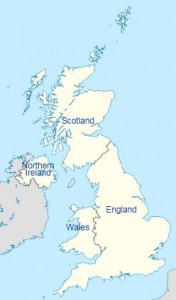 Many people may not be aware that in the United Kingdom of Great Britain, there is almost a constant state of confusion over just exactly who they are. They are considered Great Britain or the United Kingdom, but the United Kingdom takes in the countries of England, Scotland, Wales and Northern Ireland. It was on this day May 1, 1707 that England and Scotland joined together to become the United Kingdom. I think the union must have been a bit surprising, given that the English and the Scots had long battled over one thing or another. Nevertheless, The Scots needed the economic support that England could offer, while for England the merger was political. The Scots would no longer have a Parliment, but they were given instead a proportion of the seats at Westminster.
Many people may not be aware that in the United Kingdom of Great Britain, there is almost a constant state of confusion over just exactly who they are. They are considered Great Britain or the United Kingdom, but the United Kingdom takes in the countries of England, Scotland, Wales and Northern Ireland. It was on this day May 1, 1707 that England and Scotland joined together to become the United Kingdom. I think the union must have been a bit surprising, given that the English and the Scots had long battled over one thing or another. Nevertheless, The Scots needed the economic support that England could offer, while for England the merger was political. The Scots would no longer have a Parliment, but they were given instead a proportion of the seats at Westminster.
The English tend to call Great Britain, England, with notorious disregard for the feelings of the Welsh, with whom they joined in 1536 and the Scots, with whom they joined in 1707. The Act of Union of 1707, states merely that England and Scotland shall ‘be united into one kingdom by the name of Great Britain’. Many people simply lumped them together as Britain, calling all of them the Brits, which technically isn’t so…and even the English didn’t like that name. The last official merger was with Northern Ireland in 1800, at which time the enlarged kingdom became the United Kingdom of Great Britain.
It’s hard for me to think about being a country that is part of a kingdom, and yet, I suppose that is exactly what we were when the United States of America was part of England. Although we may not have been considered a part of a kingdom exactly, we were under British rule until the Revolutionary War. I suppose that there could be a love/hate relationship among the countries of the United Kingdom to this day. I do think that the British Royals do like to go to the different countries that are a part of the United Kingdom, and maybe 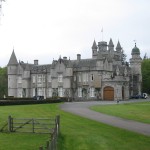
 those countries like having them come for a visit now, but I have to wonder if that was always the case. Queen Elizabeth heads to her Scottish castle, Balmoral, at this time of the year, so she must love the whole Scottish countryside at least almost as much as she does England. For Queen Elizabeth, having a castle in Scotland is normal. I suppose that if you grew up being a part of a kingdom, it would be normal, and in all reality, while it wasn’t always a kingdom, it has been since 1536, so it might as well have been always…at least for the people who call the United Kingdom of Great Britain home.
those countries like having them come for a visit now, but I have to wonder if that was always the case. Queen Elizabeth heads to her Scottish castle, Balmoral, at this time of the year, so she must love the whole Scottish countryside at least almost as much as she does England. For Queen Elizabeth, having a castle in Scotland is normal. I suppose that if you grew up being a part of a kingdom, it would be normal, and in all reality, while it wasn’t always a kingdom, it has been since 1536, so it might as well have been always…at least for the people who call the United Kingdom of Great Britain home.

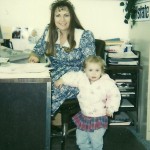 Most people have heard of or have been involved in the practice of taking their child to work with them for a day. It shows the children what their parents do everyday, and gives them a chance to learn about responsibility, work ethic, and career choices. This day was originally started in the summer of 1992 in New York by the Ms Foundation for Women and its president, Marie C Wilson, with the support of foundation founder, Gloria Steinem. The first celebration took place on April 22, 1993 and has since been celebrated on the fourth Thursday of April every year for 37 million children, parents, and schools in over 3.5 million workplaces across the country. The annual event now also includes participants in over 200 countries.
Most people have heard of or have been involved in the practice of taking their child to work with them for a day. It shows the children what their parents do everyday, and gives them a chance to learn about responsibility, work ethic, and career choices. This day was originally started in the summer of 1992 in New York by the Ms Foundation for Women and its president, Marie C Wilson, with the support of foundation founder, Gloria Steinem. The first celebration took place on April 22, 1993 and has since been celebrated on the fourth Thursday of April every year for 37 million children, parents, and schools in over 3.5 million workplaces across the country. The annual event now also includes participants in over 200 countries.
In years gone by, life was different, in that children often worked along side their parents on the farm, or as was the case with my Aunt Laura when she was little, children were with their parents until they went to school, and even after school had ended for the day. There weren’t a lot of day care options, and so it was 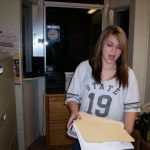 normal have your little ones around. Even in this day and age, there are places of business who have embraced the combination of work and child care in the same space. The accountant who handles the bookkeeping for our office, had a playpen in the office when her secretary had a child, so that she could do her work and not feel like she was sacrificing her baby bonding time. My own office has had children in it periodically. From my boss, Jim Stengel’s kids when they were little, to my grandchildren when they weren’t feeling well, so their mom’s could go to work, and later my grandchildren and our CSR, Carrie Beauchamp’s daughter after school. And since my daughter, Amy Royce and her daughter Shai Royce have worked here at times, we have had not only Amy’s kids here after school, but on the job too.
normal have your little ones around. Even in this day and age, there are places of business who have embraced the combination of work and child care in the same space. The accountant who handles the bookkeeping for our office, had a playpen in the office when her secretary had a child, so that she could do her work and not feel like she was sacrificing her baby bonding time. My own office has had children in it periodically. From my boss, Jim Stengel’s kids when they were little, to my grandchildren when they weren’t feeling well, so their mom’s could go to work, and later my grandchildren and our CSR, Carrie Beauchamp’s daughter after school. And since my daughter, Amy Royce and her daughter Shai Royce have worked here at times, we have had not only Amy’s kids here after school, but on the job too.
I like the idea of children learning about what goes on in a business, and learning that while in their parents place of business, there are times they will have access to their parents, and times when they need to entertain themselves quietly, because their parent is busy. I think that with the right people…innovative people, open to new ideas, children can be brought into the workplace to make the transition from new parent to employee a softer, more comfortable one. And as to having mothers who cannot take time off for sick little 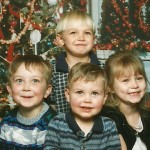
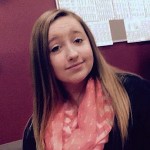 ones or days off from school, it’s nice to be a grandparent who can step in and help out, and who has a boss who understands.
ones or days off from school, it’s nice to be a grandparent who can step in and help out, and who has a boss who understands.
There are many reasons to celebrate Take Your Child To Work Day, and in my opinion, many more reasons to have a flexible work place in which having a child in the mix sometimes, is not a bad thing, but rather embraced as a special perk offered to good employees who sometimes need a little bit of consideration, so they can be free to do a good job as an employee, as well as a parent.

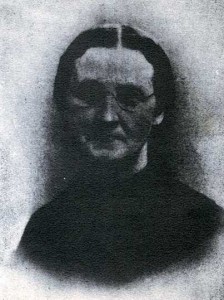 Years ago, I received a CD with a large amount of information on the Knox family, which is my husband, Bob Schulenberg’s mother, Joann Knox’s family. Knowing that these people…dozens of them…are related to you, and knowing how and where they fit in are two very different things. I have been trying to get them connected through Ancestry.com, for years, but really wasn’t able to successfully make the connections until I met John Knox, through his website and through Ancestry.com.
Years ago, I received a CD with a large amount of information on the Knox family, which is my husband, Bob Schulenberg’s mother, Joann Knox’s family. Knowing that these people…dozens of them…are related to you, and knowing how and where they fit in are two very different things. I have been trying to get them connected through Ancestry.com, for years, but really wasn’t able to successfully make the connections until I met John Knox, through his website and through Ancestry.com.
I suppose much of my problem was simply the time constraints, but when you are searching for a specific person without knowing how they fit into your family, but rather only that they do, the search can be endless. They might be the child or grandchild of your great uncle’s daughter. In order to find those connections, you need to go through every person’s children, their children, their 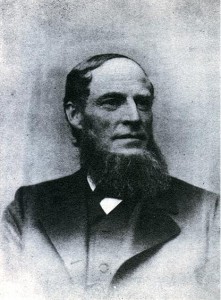
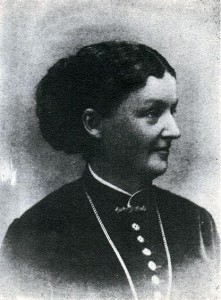 children, and so on. The process can be quite long. That is why making a connection, at any level, with a person who has done research on their family tree becomes one of the most exciting finds in your family history. By following their family back to where you suddenly stumble upon a familiar name from your own tree, you will find yourself face to face…sort of, with a common set of grandparents. Just like that, your family tree has one less mystery in it…or maybe now a new one.
children, and so on. The process can be quite long. That is why making a connection, at any level, with a person who has done research on their family tree becomes one of the most exciting finds in your family history. By following their family back to where you suddenly stumble upon a familiar name from your own tree, you will find yourself face to face…sort of, with a common set of grandparents. Just like that, your family tree has one less mystery in it…or maybe now a new one.
That was exactly how it was for me yesterday, when I finally connected the faces from the CD to the lines in my tree where they belonged. Names like Absolom Knox, who was born in 1738, married Mary Morrison, who was born in 1745, and they had a daughter named Sarah Knox. Sarah then married William Barr, and they had a son named Absolom Knox Barr. Absolom married Abia Foote Wormer, and they had a dughter named Sarah L Barr. Sarah married a man named James Beach…and that takes me in a totally new direction, and one in which they outcome is still unknown to me.
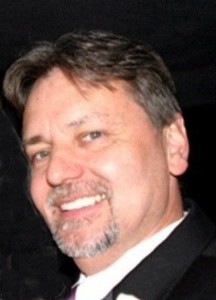
 My sister, Caryl Spencer’s first husband was Warren Beach, and together they have a daughter named Andrea and a son named Allen. Now, I know that my husband, Bob Schulenberg and I are tenth cousins on the Knox side of his family, and twelfth cousins on the Leary side of his family. So now the question becomes, is Warren Beach a cousin at some level. It would not be outside the realm of possibilities, you know. I’m sure it will take some time to trace things back to see if my hunch is right, but if it is, then not only would Caryl and Warren be cousins at some level, but Warren and Bob would be cousins at some level. As with many of my stories, this one will mst likely be the continuing saga…or maybe the mystery of the Knox/Beach connection.
My sister, Caryl Spencer’s first husband was Warren Beach, and together they have a daughter named Andrea and a son named Allen. Now, I know that my husband, Bob Schulenberg and I are tenth cousins on the Knox side of his family, and twelfth cousins on the Leary side of his family. So now the question becomes, is Warren Beach a cousin at some level. It would not be outside the realm of possibilities, you know. I’m sure it will take some time to trace things back to see if my hunch is right, but if it is, then not only would Caryl and Warren be cousins at some level, but Warren and Bob would be cousins at some level. As with many of my stories, this one will mst likely be the continuing saga…or maybe the mystery of the Knox/Beach connection.
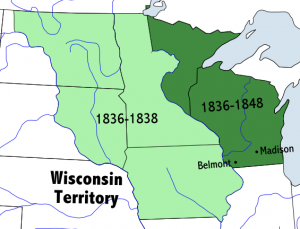 My life began in Superior, Wisconsin. Superior is a small town located at the tip of Lake Superior, which is the largest of the Great Lakes. I have always felt close ties to Superior and to Wisconsin, in general, because while I have not lived there since I was three years old, it was the place of my birth, and the place where my Uncle Bill Spencer and his family lived for many years, as well as many of my great grandparents’ family.
My life began in Superior, Wisconsin. Superior is a small town located at the tip of Lake Superior, which is the largest of the Great Lakes. I have always felt close ties to Superior and to Wisconsin, in general, because while I have not lived there since I was three years old, it was the place of my birth, and the place where my Uncle Bill Spencer and his family lived for many years, as well as many of my great grandparents’ family.
In the early years of the area, the Native American Indian Tribes called it home. The first Europeans to live there were the British and French, and the American settlers who lived in Wisconsin when it was a territory. One tribe, the Meskwaki Indians were particularly hostile toward the French, but many of the Indians got along well with the pioneers. The Great Lakes area increased dramatically after the decline of the British influence following the War of 1812. This was a land with a mix of pioneers and Indians. Of course, like most areas, the Indians were eventually placed on reservations.
Like every state in the United States, Wisconsin started as a US Territory, and when there were enough people to make statehood a necessity, each one became a state. Wisconsin initially became a terriroty on this day, April 20, 1836. Initially, it included all of the present-day states of Wisconsin, Minnesota, Iowa, and part of the Dakotas east of the 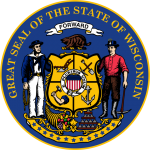 Missouri River. Much of that territory was part of the Northwest Territory, which was ceded by Britain in 1783. The portion which is now the Dakotas was originally part of the Louisiana Purchase. Eventually, the states would separate their areas, leaving Wisconsin with the area it now occupies.
Missouri River. Much of that territory was part of the Northwest Territory, which was ceded by Britain in 1783. The portion which is now the Dakotas was originally part of the Louisiana Purchase. Eventually, the states would separate their areas, leaving Wisconsin with the area it now occupies.
My people would arrive in the area much later, but many of them would stay in the area of Wisconsin and Minnesota for generations, and even to this day. For me, there will always be a place in my heart for Wisconsin, especially Superior, and the Great Lakes, especially Lake Superior. It is a beautiful area that my family has called home for generations, and I will always love it.
 By the late 1960s, space travel had become a pretty common story for the people of the United States. NASA had enjoyed a relatively accident free space travel history, having only lost three astronauts, and that was a fire on the launch pad during training. So, when it came to Apollo 13 going to the Moon, which had been done twice before, the networks decided that it was boring, and opted not to televise the program…until disaster changed everything. For me, it seems impossible that anyone could think that space flight is boring, but someone at the top ranking position in the media, had made an executive decision, so that was the end of it.
By the late 1960s, space travel had become a pretty common story for the people of the United States. NASA had enjoyed a relatively accident free space travel history, having only lost three astronauts, and that was a fire on the launch pad during training. So, when it came to Apollo 13 going to the Moon, which had been done twice before, the networks decided that it was boring, and opted not to televise the program…until disaster changed everything. For me, it seems impossible that anyone could think that space flight is boring, but someone at the top ranking position in the media, had made an executive decision, so that was the end of it.
On April 11, 1970, Apollo 13, the third manned lunar landing mission was launched from Cape Canaveral, Florida, carrying astronauts Jim Lovell, Jack Swigert, and Fred Haise. If you’ve ever seen the movie “Apollo 13”, you will know that Jack Swigert had replaced Ken Mattingly, who had been exposed to the German measles. Ken would never get the measles, but rather was a part of the NASA team effort that worked to bring the stranded astronauts back home safely. The crew planned to land on the Fra Mauro highlands of the moon, but two days into the mission, disaster struck when oxygen tank number 2 blew up in the spacecraft, after Jack Swigert was told to preform a cryo stir procedure to the oxygen tanks…a routine maintenance procedure. Then, Swigert uttered those now famous words, “Houston, we’ve had a problem here.” After evaluation, it was determined that the normal supply of oxygen, electricity, light, and water had been disrupted. Their mission to land on the Moon was over, and now they had a new mission…survival!!
Suddenly the news media was very interested in this mission. A successful mission was boring and not news worthy at all, but one in which fatalities might occur, is very interesting. Sad really…when you think about it. The television stations were supposed to broadcast a segment the crew did about life in space, but while the crew did their segment, the stations decided not to broadcast it for lack of interest. Nine minutes later, when disaster struck, everyone was suddenly very interested. I guess I just don’t understand why we would rather watch news about a disaster, than a successful space mission. I don’t think there is anything common about space travel, and yet, it goes on a lot in our world, completely without notice.
Once the disaster began, the world watched anxiously, praying for the safe return of these brave men. The broken vehicle could not make the trip, and they would have to use the lunar landing module, Oddesy to get them home. They limped along, making the necessary “MacGyver” like connections and adjustments to allow them to have enough oxygen. They made “controlled burns” using the Earth as a guide. Not very controlled at all. It took tremendous effort on the parts of many people, but it all paid off, when on April 17, tragedy turned to triumph as the Apollo 13 astronauts touched down safely in the Pacific Ocean. It was a successful failure, in that no lives were lost.
 The Great Lakes are a beautiful series of lakes in the northern United States that for all intents and purposes might as well be the ocean. They are wonderful places for all kinds of recreation, but they are also working lakes, because the Great Lakes handles shipping from all over the world. That said, the summers can be very busy on the Great Lakes, but the winters are a very different thing. Most of the Great Lakes ice over in the winter, or at least enough to make travel on them pretty much impossible. Since the winters are long in the north, the shipping companies try to get every bit of use out of the lakes that they can, and that can bring hazardous and even tragic results.
The Great Lakes are a beautiful series of lakes in the northern United States that for all intents and purposes might as well be the ocean. They are wonderful places for all kinds of recreation, but they are also working lakes, because the Great Lakes handles shipping from all over the world. That said, the summers can be very busy on the Great Lakes, but the winters are a very different thing. Most of the Great Lakes ice over in the winter, or at least enough to make travel on them pretty much impossible. Since the winters are long in the north, the shipping companies try to get every bit of use out of the lakes that they can, and that can bring hazardous and even tragic results.
November is known for screaming into the area, and with it come the Gales. I suppose that to most people, the thought of a dangerous storm of a lake seems a little odd. Yes, if it were a small boat, just about any storm could make for a dangerous situation on the lake, but when you are a big ocean going vessel or ore boat, you wouldn’t think a storm on the lake would be a big deal. You would find that you are wrong on that one though. Over the years, many lives and many ships have been lost on the Great Lakes when the ship was out on the water just a little too late in the season.
Sometimes, it would be a captain who took a chance on the weather, and got himself into trouble, but other times, it would be a situation when the November Gales fooled them and showed up early. Of course, those types of accidents were much more common before all the the weather tracking equipment that is available these days. Some of the deadliest storms were 1860 when the Lady Elgin sank, killing over 400, the 1835 Lake Huron “Cyclone” which claimed 254 lives, the 1913 Great Storm which claimed 244 lives, the 1880 Alpena  Storm which killed about 100, the 1940 Armistice Day storm which took 66 lives, the 1916 Black Friday storm which killed 49, the 1958 sinking of the Bradley with 33 lives lost, the 1905 Blow whish killed 32, the 1975 sinking of the Edmund Fitzgerald which took 29 lives, the 1966 sinking of the Morrel which left 28 dead, and the 1894 May Gale which killed 27. These are big storms with big loss of life. On our small lakes, if a summer brings a couple of drownings, we cnsider it a bad year. I can’t imagine what it would be like to lose so many lives all at once on a lake, and yet it is a possibility those in the shipping businesses on the Great Lakes live with every year.
Storm which killed about 100, the 1940 Armistice Day storm which took 66 lives, the 1916 Black Friday storm which killed 49, the 1958 sinking of the Bradley with 33 lives lost, the 1905 Blow whish killed 32, the 1975 sinking of the Edmund Fitzgerald which took 29 lives, the 1966 sinking of the Morrel which left 28 dead, and the 1894 May Gale which killed 27. These are big storms with big loss of life. On our small lakes, if a summer brings a couple of drownings, we cnsider it a bad year. I can’t imagine what it would be like to lose so many lives all at once on a lake, and yet it is a possibility those in the shipping businesses on the Great Lakes live with every year.

